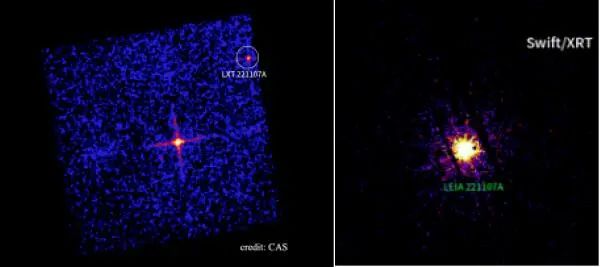
The main part of the star map captured by a star trackers is the stars, which only occupy a portion of the pixels in the detector’s image, and the corresponding energy satisfies a Gaussian distribution. The imaging characteristics of long-range space debris are very similar to those of stars. In the process of detecting and processing space debris, stars will largely have an impact on identifying weak and small targets. There is a difference between the stellar background and conventional background clutter, which requires extracting stars from the background and distinguishing between stars and small spatial targets.
In the observed star map, stars are presented as point shaped targets, and the energy distribution of the image approximates a Gaussian distribution. Due to the differences in brightness of stars, some have dozens of imaging pixels, some have a few, and even only one.
In the observed star map, space debris is presented as point shaped targets, occupying dozens or even a few pixels. There is no available information such as texture or structure, and the imaging brightness of space debris in the image is unstable.
When the space camera is running, it is basically in outer space radiation, which is mainly high-energy particles. These particles will hit the focal plane of the detector, instantly enhancing the signal within a pixel. The spatial radiation noise and remote spatial weak imaging characteristics are somewhat similar.
In the absence of incident light hitting the detector, due to the presence of dark current noise, the detector still forms electron numbers. Generally, the main manifestation of dark current noise in the image is single pixel points with relatively fixed positions, making this type of noise detection relatively simple.
The magnitude of this noise directly depends on the conditions of the detection area, and most of it is radiation dominated deep space background noise.
In general, when discussing the issue of stellar signal energy, stars can be considered as blackbody radiation, mainly representing the stellar radiation energy per unit volume, time, and incremental wavelength. The radiation intensity of a star itself depends on its temperature, which is called objective brightness. The brightness that can be observed by the human eye is determined by factors such as transmittance and distance to obtain the corresponding luminous intensity of the star, which is subjective brightness. It is represented by magnitude, and as the magnitude decreases, the representative brightness increases.
Stars belong to point light sources, and the optical system’s point spread function in an ideal state is δ Function, due to the need to take into account the aberration of the optical system, there will be some dispersion of stellar energy, but it will still be concentrated within a small number of pixel ranges. Star sensors generally choose to use defocusing to obtain diffuse spots; Some designs start with optical systems to meet the requirements of subdivision algorithms for star point dispersion spots.
Send us a message,we will answer your email shortly!